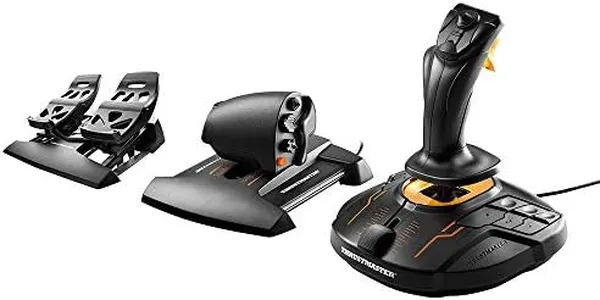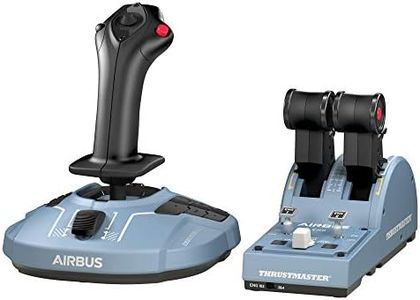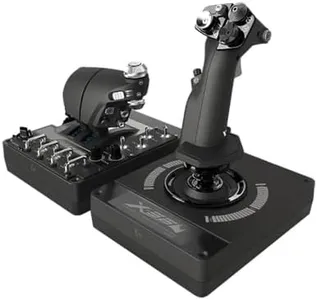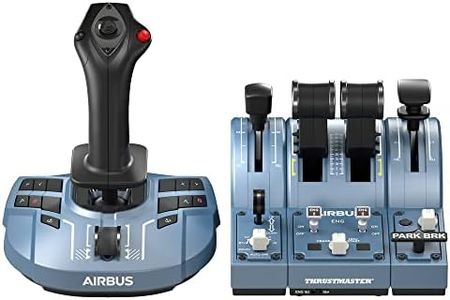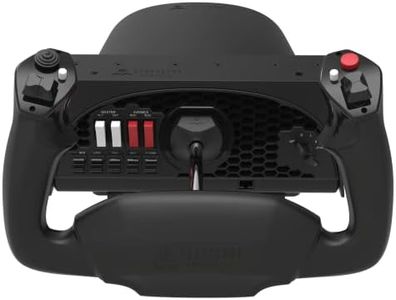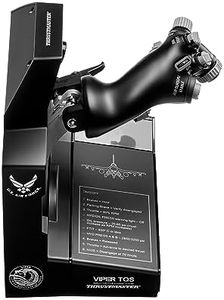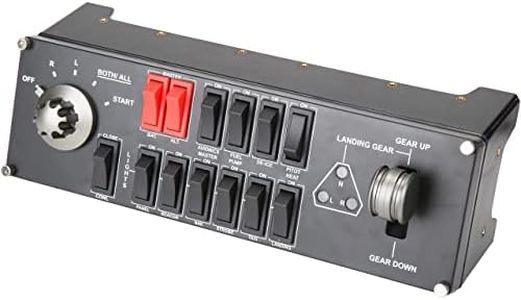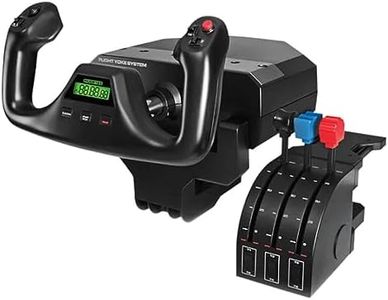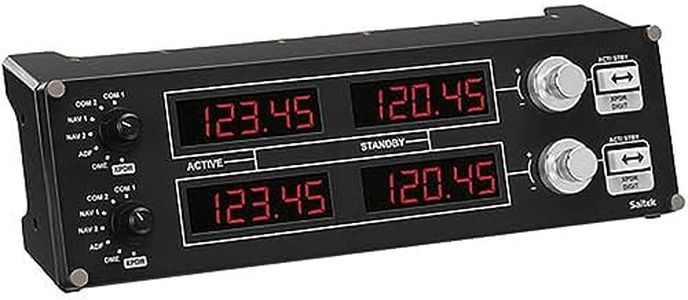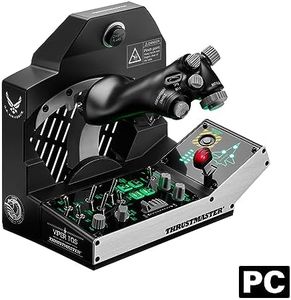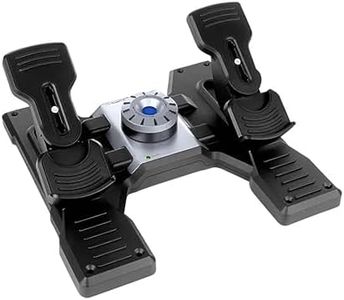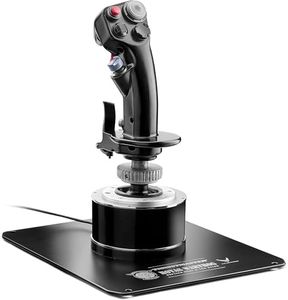We Use CookiesWe use cookies to enhance the security, performance,
functionality and for analytical and promotional activities. By continuing to browse this site you
are agreeing to our privacy policy
10 Best Flight Simulators
From leading brands and best sellers available on the web.By clicking on a link to a third party's website, log data is shared with that third party.
Buying Guide for the Best Flight Simulators
Flight simulators are fascinating tools that recreate the experience of flying an aircraft from the safety of your own space. Whether you're aiming to learn the basics of flight, practice piloting skills, or just want to immerse yourself in a realistic flying environment as a hobbyist, choosing the right simulator involves understanding your needs, technical capabilities, and preferred style of play. It's important to consider what kinds of aircraft you want to fly, the depth of realism you’re looking for, and how much time you intend to dedicate to learning controls and procedures. Picking based on these factors will help make your experience enjoyable and rewarding.Realism LevelThe realism level refers to how closely the simulator mimics real aircraft behavior, controls, and scenarios. Basic simulators are geared towards casual users and focus on simple controls and easy learning curves. Intermediate simulators offer a mix of realistic controls and more advanced scenarios, while advanced simulators provide true-to-life physics, systems management, and require real pilot-like procedures. If you’re just starting out or want a more relaxed experience, look for beginner or medium realism. If you seek pilot training or serious simulation, choose high-realism software that challenges you with real-world navigation, failures, and flight dynamics.
Aircraft VarietyAircraft variety means the number and types of planes you can fly within the simulator, such as small propeller aircraft, commercial jets, helicopters, or even military planes. Simpler simulators may only include a handful of basic planes, while more comprehensive versions offer dozens of detailed models. Think about what interests you most: If you want to fly a wide range of entire fleets, choose a simulator with extensive aircraft libraries. If you prefer mastering a single plane, fewer options are perfectly fine, as they might deliver more in-depth modeling.
Scenery and EnvironmentThis aspect concerns how realistic and varied the simulated world looks. Some simulators provide simple landscapes and generic airports, while others offer detailed recreations of real-world locations with weather systems, day-night cycles, and traffic. If immersion is a high priority, or you want to practice navigation using actual landmarks, opt for simulators that offer updated and richly detailed global scenery. Those who are content with casual flying can stick with basic graphics and landscape features.
Hardware CompatibilityHardware compatibility refers to what devices and controls (like joysticks, yokes, pedals, and VR headsets) the simulator works with, as well as the type of computer or console needed. Some simulators work with simple keyboard and mouse commands, while others are best experienced with dedicated flight controls or support for virtual reality. Check your current setup: If you have special controllers or VR, make sure the simulator supports them. For beginners with only a computer, ensure your system meets the simulator’s requirements.
Multiplayer and Community FeaturesThis spec addresses the ability to fly online with others, join virtual air traffic control networks, or access user-created content and communities. If you enjoy social experiences, learning from real pilots, or participating in organized events, prioritize simulators with robust multiplayer and active communities. If you prefer solo flying or aren’t interested in online features, this might not be as important.
Learning Curve and TutorialsThe learning curve involves how easy it is to get started and progress in mastering flight within the simulator. Some simulators come with comprehensive training missions, clear tutorials, and gradual difficulty, which are ideal for beginners. Others assume prior knowledge or require reading manuals and external research. If you’re a newcomer, pick a simulator with built-in guidance. Advanced users may prefer greater freedom to explore complex systems without restrictions.
